#backyard pond
Text

121 notes
·
View notes
Text

Composition (birds. dragonfly. reeds)
You can find prints of this and my other collages on inprnt here:
#artists on tumblr#art#illustration#black and white#collage#collage art#helicopter#dragonfly#reeds#backyard pond
19 notes
·
View notes
Text
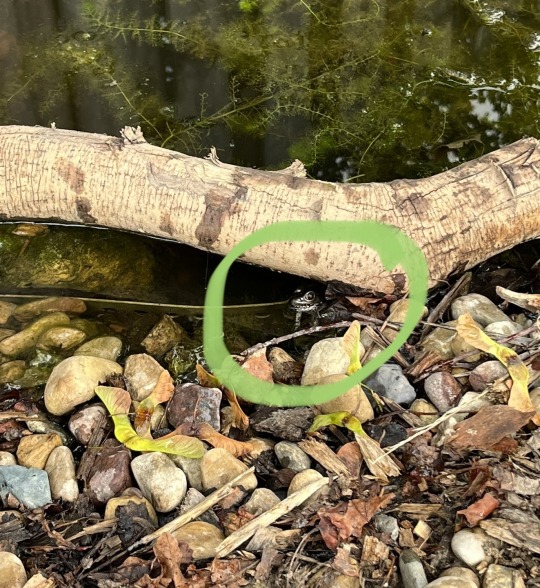
A FROGGIE HAS MOVED INTO MY POND THIS IS NOT A DRILL AAAAAAA
#frog#backyard pond#YESSSSSSSSS#THAT IS WHERE YOU **GO**#I made this for YOU And now you are HERE#YESSSSSSS
11 notes
·
View notes
Text

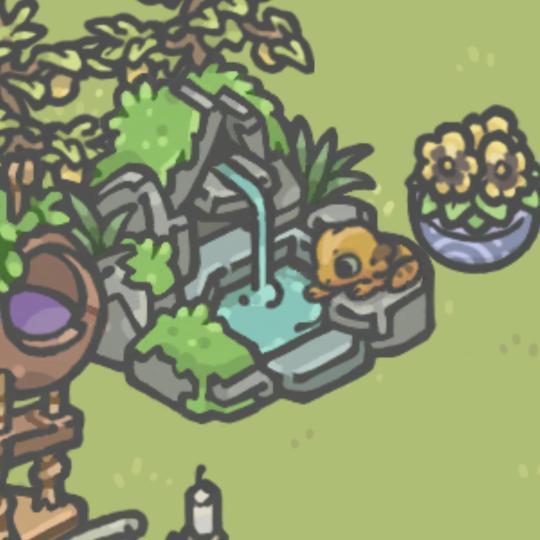

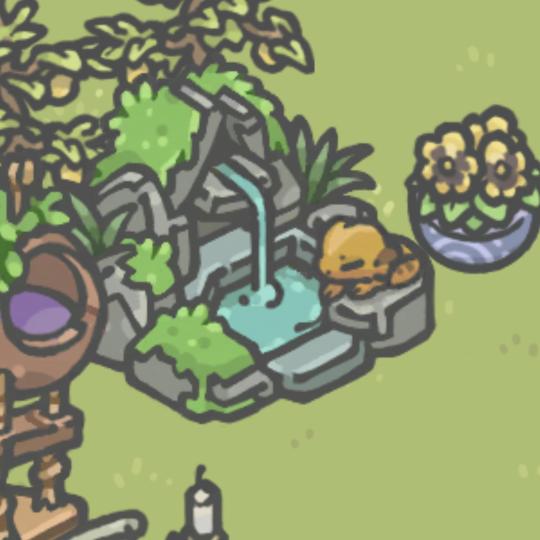
Summertime guys, stay hydrated, drink water, take care of your gecko and be pride!!
Enki e sua fontezinha
11 notes
·
View notes
Text

Transform Your Yard: The Ultimate Guide to Building a Serene Soaking Pond
The Power of a Soaking Pond
Imagine stepping into your backyard after a long, stressful day. Instead of the usual hustle and bustle, you're greeted by the gentle sound of water cascading over smooth rocks. The air is filled with the soothing scent of nature, and a sense of calm washes over you. This is the magic of a soaking pond—a sanctuary of serenity right in your own yard.
Where to Begin
Selecting the Perfect Spot
Before you grab your shovel and start digging, take some time to carefully choose the location for your soaking pond. Look for an area of your yard that receives partial shade to prevent excessive algae growth and maintain a comfortable water temperature. Additionally, consider the landscape and ensure that the spot you choose complements the overall aesthetics of your outdoor space.
Gathering Your Materials
Building a soaking pond requires a few essential materials, including a pond liner, rocks or gravel, a water pump, and aquatic plants. These elements not only create a beautiful visual but also contribute to the health and balance of your pond ecosystem. Be sure to invest in high-quality materials to ensure the longevity of your pond.
Building Your Soaking Pond
Digging the Foundation
Once you've chosen the perfect location and gathered your materials, it's time to start digging. Use a shovel or excavator to carefully excavate the area, creating a shallow basin for your pond. Aim for a depth of around 18 to 24 inches to ensure ample soaking space without the risk of water overflow.
Installing the Pond Liner
With your foundation dug, it's time to lay down the pond liner. This waterproof barrier will prevent leaks and ensure that your soaking pond retains water effectively. Take care to smooth out any wrinkles or folds in the liner to create a seamless surface.
Adding Natural Elements
Now comes the fun part—adding natural elements to enhance the beauty and functionality of your soaking pond. Start by arranging rocks or gravel along the edges of the pond to create a natural border. These elements not only provide visual interest but also serve as a habitat for beneficial bacteria and aquatic organisms.
Caring for Your Soaking Pond
Water Quality Management
Maintaining pristine water quality is essential for the health and longevity of your soaking pond. Regularly test the water pH and nutrient levels and make adjustments as needed to keep your pond ecosystem in balance. Additionally, consider adding beneficial bacteria and aquatic plants to help filter out impurities and promote a healthy environment.
Algae Control
While a bit of algae is natural in any pond ecosystem, excessive growth can detract from the beauty of your soaking pond. Combat algae blooms by incorporating natural solutions such as barley straw or beneficial bacteria products. Additionally, consider adding shade-loving plants or installing a fountain or waterfall feature to help aerate the water and discourage algae growth.
Embrace Tranquility with a Soaking Pond
In conclusion, building a soaking pond in your yard is a transformative experience that brings peace, tranquility, and natural beauty to your outdoor space. By carefully selecting the perfect location, gathering high-quality materials, and following proper construction and maintenance techniques, you can create a serene oasis that you'll enjoy for years to come.
1. How much space do I need to build a soaking pond?
While the size of your soaking pond can vary depending on your preferences and available space, aim for a minimum depth of 18 to 24 inches and enough surface area to comfortably accommodate multiple people.
2. Do I need to hire a professional to build a soaking pond?
While hiring a professional landscaper or pond builder can streamline the process and ensure optimal results, building a soaking pond is entirely feasible as a DIY project for those with basic construction skills and a willingness to learn.
3. What types of aquatic plants are suitable for a soaking pond?
A variety of aquatic plants can thrive in a soaking pond environment, including water lilies, lotus flowers, iris, and horsetail. Be sure to select species that are well-suited to your climate and water depth to ensure success.
2 notes
·
View notes
Text
My Koi fish
#koi fish#pretty fish#my setup#my life#my backyard#backyard pond#house idea#washington#walla walla#up close and personal#my stuff#my video#my pets#pets#fishblr#fish#fall time#water#pond#my babies#i love them#growth#seattle#author life#personal#all mine#lanscape#beautiful#beauty#blessed
5 notes
·
View notes
Text
The Importance of Natural Pond Maintenance: A Guide to Preserving Your Ecosystem
Natural ponds are beautiful additions to any landscape, providing a serene and tranquil environment for humans and wildlife alike. Natural ponds provide habitats for various plants, fish, and other wildlife. Maintaining your pond ensures that these species have a stable environment in which to thrive. At Reflections Water Gardens, we’re dedicated to helping you create and maintain a beautiful, healthy natural pond.
3 notes
·
View notes
Photo
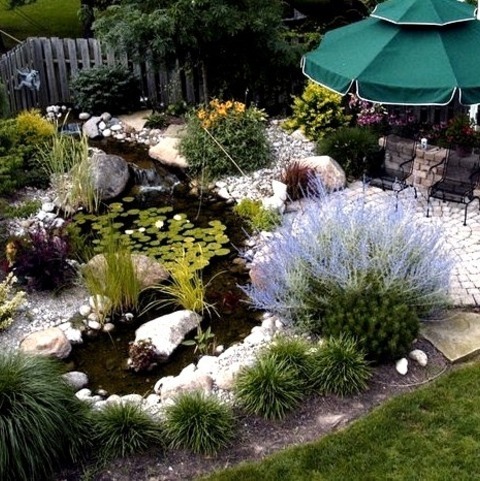
Pond in New York
Design ideas for a mid-sized eclectic full sun backyard stone pond in spring.
2 notes
·
View notes
Text
Yard Ponds - Normal water Garden Tips
I wish to introduce you to a wonderful hobby that is entertaining and rewarding, the particular world of back garden ponds. If an individual would like to be able to build a pond then allow me to provide you some guidelines i learned over the years. Whether thinking about species of fish ponds or garden ponds, these several tips will support you get began.
-My first hint should be to plan your current pond carefully. A person want to find your pond faraway from trees or huge plants because when fall comes the particular leaves fall, in addition to guess where they go, right in your pond. They cause decay and waste material create more do the job for you. It really is good for your own pond to end up being in about 60 per cent sun but not in addition to that. Too many sun and you should advertise algae growth, which in turn can quickly more than run a pond.
-My next hint is usually to decide in the event that you are proceeding to have a new garden pond or perhaps fish pond? This kind of is important mainly because you must determine on a pond liner. There are basically two ways to travel here; one is usually a rubber liner or even a molded liner, it can make some sort of difference about the type of pond a person are going in order to have. If a person are planning to add fish in that case I would proceed with the rubber ship which can be flexible, solid, and enable you style your pond inside any shape you choose. If a person decide to add Koi, then you should have a pond of at minimum 3 feet deeply at one finish, but if you are simply going to have a water garden pond a molded liner can be fine.
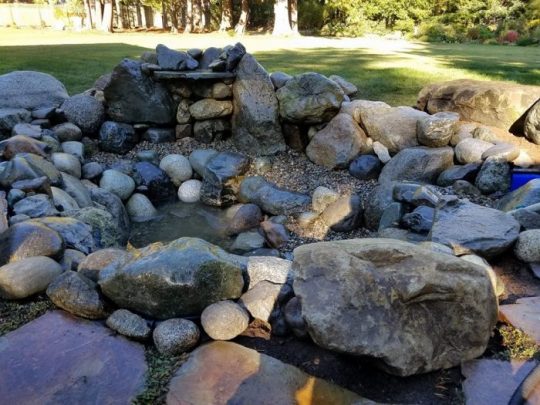
-My third tip is just about all about filtration in addition to keeping your pond clean. How humiliating it can become to get a few friends as well as you show them your pond, but they are struggling to see your own fish because the water is too dim. We are heading to prevent that from happening using the proper pond filtration system and pump. To generate this an enjoyment and rewarding interest you have to install typically the right filtration regarding your pond. You should calculate how many gallons of drinking water your pond will certainly hold, to be able to sizing your filter and pump. I will give you my advice here from many years of experience with three or more different ponds using trying many forms of pond filtration. To maintain crystal clear water in my pond I use what is named a staged filtration system system using a sealed for underwater use pump at the end regarding my pond. The particular type I make use of is a Laguna� large efficiency waterfall filter. The reason I use a waterfall is to help oxidize this particular, and besides it looks good.
youtube
-My ultimate tip is to add water plants so that your fish may have cover about those bright sun-drenched days. As an example, My partner and i have water lilies covering about include of my pond that produce stunning flowers and nevertheless give shade in order to my fish. Become careful what varieties of plants that will you add, specifically if you have Koi inside your pond because they will love to munch in vegetation. I actually use floating planters that keep the Koi from consuming the plants.
As you can notice, backyard ponds can be a really wonderful sense involving pride and pleasure for your entire family.
4 notes
·
View notes
Text
youtube
As part of Christina's Solarpunk Action Week activities, she tackled cleaning out the pond in her backyard. You can check out parts one and two on our YouTube page. Watch out for Solarpunk Doggo, mucky water, and Christina's dance moves.
#solarpunk#Solarpunk Presents Podcast#podcast#podcasting#pond#backyard pond#pond cleaning#cleaning out a pond#water feature#gardening#rainwater#rainwater-fed pond#mucking about#muck#water#landscaping#Solarpunk Action Week#SPAW#Youtube
1 note
·
View note
Text

Easily Build a Multi-Step Waterfall in Your Backyard
Transforming your backyard into a tranquil oasis can be a rewarding endeavor. One way to achieve this is by adding a multi-step waterfall, which not only enhances the aesthetic appeal but also brings the soothing sounds of flowing water to your outdoor space. In this comprehensive guide, we'll walk you through the process of easily building a multi-step waterfall in your backyard, turning it into a serene retreat.
Planning Your Waterfall Design
Before diving into the construction process, it's essential to plan out your waterfall design. Consider factors such as the size of your backyard, the desired location for the waterfall, and the overall aesthetic you wish to achieve. Sketch out a rough design and decide on the number of steps you want in your waterfall.
Choosing the Right Location
Select a location in your backyard that offers sufficient space for the waterfall and complements the existing landscape. Ensure that there is easy access to a power source for the pump and that the terrain allows for proper drainage.
Designing the Steps
Decide on the number and size of steps for your waterfall based on the available space and personal preference. Opt for natural-looking materials such as stone or faux rock to create a visually appealing and durable structure.
Gathering Materials and Tools
Once you have finalized your waterfall design, it's time to gather the necessary materials and tools for the construction process. Here's a list of items you'll need:
Pond liner
Water pump
Flexible tubing
Rocks or stones for the waterfall steps
Shovel
Level
Rubber mallet
Gloves
Waterproof sealant
Building Your Multi-Step Waterfall
Now that you have everything you need, it's time to start building your multi-step waterfall. Follow these step-by-step instructions for a seamless construction process:
Step 1: Excavate the Area
Begin by digging a shallow pond at the base of your waterfall. Use a shovel to excavate the area, ensuring that it is slightly larger than the dimensions of your pond liner. Level the bottom of the pond to ensure stability.
Step 2: Install the Pond Liner
Place the pond liner into the excavated area, ensuring that it overlaps the edges by at least 6 inches. Smooth out any wrinkles and folds, pressing the liner firmly into place.
Step 3: Position the Water Pump
Place the water pump at the base of the pond, ensuring that it is securely positioned and level. Connect the flexible tubing to the pump, running it up the backside of the waterfall structure.
Step 4: Arrange the Rocks
Start arranging the rocks or stones to create the steps of your waterfall. Begin at the base of the pond and work your way up, ensuring that each step is securely positioned and stable. Use a rubber mallet to adjust the rocks as needed.
Step 5: Create Water Flow
Connect the flexible tubing to the top of the waterfall structure, allowing water to flow down the steps. Adjust the positioning of the rocks to control the flow and create a natural-looking cascade.
Step 6: Seal the Joints
Once the waterfall structure is in place, seal any gaps or joints between the rocks using waterproof sealant. This will prevent water from leaking out and ensure the longevity of your waterfall.
Maintenance Tips
To keep your multi-step waterfall in optimal condition, follow these maintenance tips:
Regularly check the water level and top it up as needed to prevent the pump from running dry.
Clean the pump and filter regularly to remove debris and prevent clogging.
Trim any overhanging vegetation to prevent leaves and debris from falling into the pond.
Inspect the waterfall structure for any signs of damage or wear and tear, and make repairs as necessary.
Building a multi-step waterfall in your backyard is a rewarding project that can transform your outdoor space into a tranquil retreat. By following the steps outlined in this guide and incorporating your own creative flair, you can easily create a stunning water feature that enhances the beauty and ambiance of your backyard.
FAQs
Q1: How much does it cost to build a multi-step waterfall in your backyard?
A1: The cost of building a multi-step waterfall varies depending on factors such as the size of the waterfall, the materials used, and whether you choose to DIY or hire a professional. On average, you can expect to spend anywhere from a few hundred to several thousand dollars.
Q2: Do I need any special skills or experience to build a multi-step waterfall?
A2: While some basic DIY skills are helpful, you don't necessarily need any special expertise to build a multi-step waterfall. Following a detailed guide, like the one provided here, and taking your time during the construction process can help you achieve professional-looking results.
Q3: Can I incorporate lighting into my multi-step waterfall design?
A3: Yes, incorporating lighting into your waterfall design can enhance its visual appeal, especially at night. Consider installing waterproof LED lights along the steps or around the pond to create a stunning nighttime ambiance.
1 note
·
View note
Text
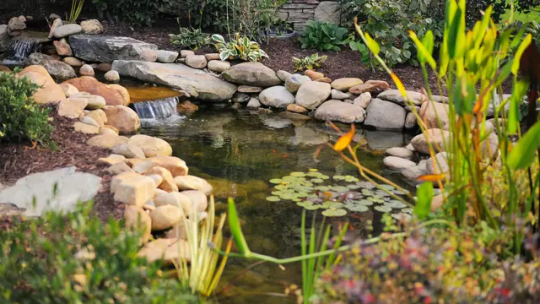
Essential Components for Constructing Your Own Pond
Ponds have an undeniable charm, adding serenity and biodiversity to any landscape. Constructing your own pond is a fulfilling endeavor, but it requires careful planning and attention to detail. From selecting the right location to choosing suitable aquatic plants, every step contributes to the success of your aquatic oasis.
Selecting the Perfect Location
The first step in building your own pond is selecting an optimal location. Choose an area that receives ample sunlight, as most aquatic plants thrive in sunlight-rich environments. Additionally, avoid areas with overhanging trees to prevent debris from falling into the pond. The proximity to utilities like water and electricity should also be considered for maintenance purposes.
Factors to Consider:
Sunlight exposure
Avoidance of overhanging trees
Accessibility to water and electricity
Pond Design and Size
The design and size of your pond will largely depend on available space and personal preferences. A larger pond offers greater opportunities for biodiversity and landscaping creativity, while a smaller pond may be more manageable for maintenance.
Key Considerations:
Depth for aquatic life
Shape and aesthetics
Incorporation of features like waterfalls or fountains
Essential Equipment and Materials
To bring your pond to life, you'll need the right equipment and materials. This includes pond liners, pumps, filters, and edging materials. Choose high-quality components to ensure the longevity and efficiency of your pond.
Necessary Supplies:
Pond liner
Water pump
Filtration system
Edging materials (e.g., rocks, bricks)
Aquatic Plants and Fish Selection
Aquatic plants and fish are essential components of a healthy pond ecosystem. Select a variety of native plants to oxygenate the water and provide habitat for wildlife. When introducing fish, consider species that are compatible with your climate and pond size.
Recommended Species:
Water lilies
Lotus
Koi fish
Goldfish
Maintenance and Care
Proper maintenance is crucial for the health and longevity of your pond. Regular tasks include removing debris, controlling algae growth, and monitoring water quality. Investing in a pond vacuum and water testing kits can simplify maintenance tasks.
Maintenance Tips:
Remove leaves and debris regularly
Monitor water pH and clarity
Trim aquatic plants as needed
Constructing your own pond is a rewarding experience that brings nature closer to home. By carefully considering location, design, equipment, and maintenance needs, you can create a vibrant aquatic ecosystem that enhances your outdoor space.
FAQs
How deep should my pond be?
The depth of your pond depends on factors such as the climate and intended use. However, a depth of at least 18 inches is recommended to provide adequate habitat for aquatic life.
Do I need a filtration system for my pond?
Yes, a filtration system is essential for maintaining water clarity and quality. It helps remove debris and waste, creating a healthier environment for plants and fish.
Can I use tap water to fill my pond?
While tap water can be used to fill your pond, it may contain chemicals like chlorine that are harmful to aquatic life. Consider using a dechlorinator or letting the water sit for a few days before adding plants and fish.
1 note
·
View note
Text

Unveiling the Ultimate Pond Filtration Systems
Ensuring optimal water quality is paramount for the health and vitality of aquatic life. A crucial component in achieving this balance is investing in the best pond filtration systems. These systems not only keep the water crystal clear but also regulate essential parameters like ammonia, nitrites, and nitrates, thus fostering a thriving ecosystem within your pond.
Understanding the Essence of Pond Filtration
Pond filtration serves as the cornerstone of maintaining water clarity and quality by eliminating debris, toxins, and excess nutrients. A robust filtration system acts as the guardian of your pond, tirelessly working to remove impurities and maintain a harmonious environment for aquatic flora and fauna to flourish.
The Role of Mechanical Filtration
Mechanical filtration involves the physical removal of debris and particulate matter from the water column. This process typically occurs through the utilization of filter media such as sponges, filter pads, or brushes, which trap suspended solids as water passes through them. The efficiency of mechanical filtration is determined by the pore size and density of the filter media, ensuring that even the finest particles are captured.
Embracing Biological Filtration
Biological filtration harnesses the power of beneficial bacteria to break down harmful compounds present in the water, such as ammonia and nitrites, into less toxic forms like nitrates. This biological process occurs within specialized filter media, such as bio-balls, ceramic rings, or porous stones, providing a habitat for bacterial colonies to thrive. By fostering this natural nitrogen cycle, biological filtration plays a pivotal role in maintaining water quality and promoting a healthy ecosystem within the pond.
Delving into Chemical Filtration
Chemical filtration targets specific impurities within the water through the use of specialized filter media or additives. Activated carbon, zeolite, and ion exchange resins are commonly employed to adsorb pollutants, neutralize odors, and remove trace elements, ensuring pristine water conditions. While not always necessary, incorporating chemical filtration can provide an extra layer of purification for ponds facing unique challenges or water quality issues.
Exploring the Best Pond Filtration Systems
OASE BioSmart 5000 Pond Filter
The OASE BioSmart 5000 Pond Filter stands out as a top contender in the realm of pond filtration systems. Equipped with a multi-stage filtration process, including mechanical and biological filtration, this system effectively removes debris and promotes beneficial bacterial growth. Its innovative design features a built-in UV clarifier, which helps combat algae blooms and maintain water clarity, making it a comprehensive solution for ponds up to 5,000 gallons.
Aqua Ultraviolet Ultima II Filter
For ponds requiring heavy-duty filtration, the Aqua Ultraviolet Ultima II Filter offers unparalleled performance and reliability. Engineered with advanced biological filtration technology, this filter boasts a patented "cyclonic" backwash system, ensuring efficient cleaning and minimal maintenance. With models available for ponds ranging from 1,000 to 10,000 gallons, the Ultima II Filter provides customizable solutions tailored to the specific needs of your aquatic environment.
Pondmaster Clearguard Pressurized Filter
The Pondmaster Clearguard Pressurized Filter combines convenience with effectiveness, making it a popular choice among pond enthusiasts. Featuring a unique backwash system and integrated UV clarifier, this pressurized filter effortlessly tackles debris and algae, delivering pristine water quality with minimal effort. Its compact design and user-friendly operation make it ideal for both novice and experienced pond keepers alike.
Choosing the Right Filtration System for Your Pond
Selecting the best pond filtration system hinges on various factors, including pond size, stocking density, and budgetary considerations. Conducting a thorough assessment of your pond's needs and consulting with industry experts can help steer you towards the most suitable filtration solution. Additionally, prioritizing quality and reliability ensures long-term success in maintaining a healthy and vibrant aquatic ecosystem.
Investing in the best pond filtration system is essential for safeguarding the well-being of your aquatic habitat. By employing a combination of mechanical, biological, and chemical filtration methods, these systems ensure optimal water quality and clarity, fostering an environment conducive to the flourishing of aquatic life. Whether you opt for the comprehensive filtration capabilities of the OASE BioSmart 5000, the superior performance of the Aqua Ultraviolet Ultima II, or the convenience of the Pondmaster Clearguard, rest assured that your pond will thrive under the care of these top-tier filtration systems.
FAQs:
Q1: How often should I clean my pond filtration system?
A1: The frequency of cleaning your pond filtration system depends on various factors, including the system's design, pond size, and stocking density. Generally, it's recommended to perform routine maintenance, such as backwashing or replacing filter media, every 1-2 months to ensure optimal performance.
Q2: Can I use multiple filtration systems in my pond?
A2: Yes, combining multiple filtration systems, such as mechanical, biological, and chemical filtration, can enhance water quality and provide comprehensive purification. However, it's crucial to ensure compatibility between different filtration components and to avoid overfiltration, which can disrupt the pond's ecosystem balance.
Q3: Do pond filtration systems require electricity to operate?
A3: Yes, most pond filtration systems, particularly those equipped with UV clarifiers or pumps, require electricity to function. It's essential to factor in energy consumption and consider energy-efficient options when selecting a filtration system to minimize operational costs and environmental impact.
0 notes
Text

Creating Your Dream Patio Pond
Adding a patio pond to your outdoor space can transform it into a tranquil oasis, bringing the soothing sights and sounds of nature right to your doorstep. Whether you have a sprawling backyard or a cozy balcony, building a patio pond is a rewarding DIY project that enhances the aesthetics and ambiance of your outdoor area. In this guide, we'll walk you through the step-by-step process of creating your own patio pond, from planning and design to maintenance tips for keeping your pond thriving.
Planning Your Patio Pond Design
Before you dive into the construction phase, take some time to plan out the design of your patio pond. Consider the size and shape of your outdoor space, as well as any existing landscaping features. Choose a location that receives adequate sunlight and complements the overall aesthetic of your patio or garden. Additionally, think about the type of pond you want to create – whether it's a formal koi pond, a natural wildlife habitat, or a serene water garden filled with aquatic plants.
Gathering Materials and Supplies
Once you have a clear vision of your patio pond design, it's time to gather the necessary materials and supplies. Here's a basic list of what you'll need:
Pond Liner: Choose a durable, flexible liner that is resistant to punctures and UV degradation. EPDM rubber liners are a popular choice for patio ponds.
Pump and Filtration System: A reliable pump and filtration system are essential for maintaining water quality and circulation in your pond.
Rocks and Gravel: Select natural rocks and gravel to create a naturalistic shoreline and provide habitat for beneficial bacteria and aquatic plants.
Plants: Choose a variety of aquatic plants, such as water lilies, lotus, and water hyacinths, to add beauty and oxygenate the water.
Fish (Optional): If you're interested in keeping fish in your patio pond, consider species that are well-suited to your climate and pond size, such as goldfish or mosquito fish.
Building Your Patio Pond
Now that you have all the necessary materials, it's time to start building your patio pond. Follow these steps:
Excavation: Dig a hole in the desired location for your pond, making sure to create a variety of depths to accommodate different types of plants and wildlife.
Install the Liner: Lay the pond liner in the excavated hole, ensuring that it is smooth and free of wrinkles. Trim any excess liner, leaving a generous overlap around the edges.
Add Rocks and Gravel: Arrange rocks and gravel along the edges of the pond to create a naturalistic border and hide the edges of the liner. Be sure to leave space for planting aquatic vegetation.
Install Pump and Filtration System: Place the pump and filtration system in the deepest part of the pond, following the manufacturer's instructions for installation and setup.
Add Water and Plants: Fill the pond with water and carefully place aquatic plants in their designated areas. Consider adding floating plants to provide shade and shelter for fish.
Cycle the Pond: Allow the pond to cycle for at least a week before adding fish, allowing beneficial bacteria to establish and water parameters to stabilize.
Maintaining Your Patio Pond
Once your patio pond is up and running, it's important to keep up with regular maintenance to ensure its health and beauty. Here are some essential maintenance tasks:
Water Quality: Test the water regularly for pH, ammonia, nitrites, and nitrates, and perform partial water changes as needed to maintain optimal water quality.
Plant Care: Trim and remove dead foliage from aquatic plants, and thin out overgrown plants to prevent overcrowding.
Fish Care: If you have fish in your pond, monitor their health and behavior regularly, and provide appropriate food and shelter.
Pump and Filter Maintenance: Clean and inspect the pump and filtration system regularly to prevent clogs and ensure proper function.
Building a patio pond is a fulfilling project that adds beauty, tranquility, and biodiversity to your outdoor space. By following the steps outlined in this guide and staying on top of maintenance tasks, you can create a stunning water feature that enhances your patio or garden for years to come.
FAQs
Q1: Do I need a permit to build a patio pond? A1: The regulations regarding permits for patio ponds vary depending on your location and the size of the pond. It's best to check with your local government or homeowner's association to determine if any permits are required.
Q2: Can I use tap water to fill my patio pond? A2: Tap water can be used to fill your patio pond, but it may contain chlorine or chloramines, which can be harmful to fish and aquatic plants. Consider treating the water with a dechlorinator before adding it to the pond, or let it sit for 24 hours to allow the chlorine to dissipate.
Q3: How often should I clean my patio pond? A3: The frequency of cleaning your patio pond will depend on factors such as the size of the pond, the number of fish and plants, and the local environment. Generally, you should perform routine maintenance tasks such as removing debris and testing water quality on a weekly or bi-weekly basis, with more thorough cleanings as needed.
1 note
·
View note
Text

The Benefits of Adding Plants to a Pond
Adding plants to your pond can significantly enhance its aesthetic appeal while providing numerous benefits to its ecosystem. Whether you have a small backyard water feature or a large natural pond, incorporating aquatic plants can create a balanced and thriving environment. In this comprehensive guide, we'll explore the advantages of adding plants to your pond, from water quality improvement to creating a habitat for wildlife.
Why Add Plants to Your Pond?
Plants play a crucial role in maintaining a healthy pond ecosystem. They contribute to the oxygenation of water, absorb excess nutrients, provide shade, and create a natural habitat for fish and other aquatic organisms. By incorporating a variety of plants, you can establish a balanced ecosystem that is both visually appealing and environmentally sustainable.
Oxygenation and Water Quality
One of the primary benefits of adding plants to your pond is their role in oxygenation and water filtration. Through a process called photosynthesis, aquatic plants absorb carbon dioxide and release oxygen, helping to oxygenate the water. This is especially important in ponds with high fish populations, as it ensures an adequate supply of oxygen for fish and other aquatic life.
Types of Pond Plants
There are various types of plants that you can add to your pond, each serving a different purpose and contributing to its overall health and beauty. These include:
1. Floating Plants
Floating plants, such as water lilies and duckweed, float on the surface of the water and provide shade, reducing the growth of algae. They also help to oxygenate the water and provide habitat for fish and other aquatic creatures.
2. Submerged Plants
Submerged plants, such as hornwort and anacharis, grow entirely underwater and help to oxygenate the water while absorbing excess nutrients. They also provide hiding places for fish and can help to stabilize the pond's ecosystem.
3. Marginal Plants
Marginal plants, such as cattails and iris, grow along the edges of the pond and help to filter runoff water, preventing pollutants from entering the pond. They also provide habitat for amphibians and insects and add beauty to the pond's perimeter.
Maintenance and Care
While adding plants to your pond can provide numerous benefits, it's essential to properly maintain them to ensure their health and longevity. Regular maintenance tasks may include:
Pruning dead or overgrown foliage.
Removing debris and excess algae.
Fertilizing plants as needed.
Dividing and replanting overcrowded specimens.
Adding plants to your pond is a fantastic way to enhance its beauty and promote a healthy ecosystem. Whether you're looking to improve water quality, provide habitat for wildlife, or simply enjoy the serene beauty of aquatic plants, incorporating them into your pond can have numerous benefits. By selecting a variety of plant species and properly maintaining them, you can create a thriving ecosystem that brings joy and tranquility for years to come.
FAQs
1. Can I add plants to any type of pond?
Yes, you can add plants to virtually any type of pond, including natural, man-made, and even small backyard water features. However, it's essential to choose plant species that are suitable for your specific pond environment and to properly maintain them to ensure their health and vitality.
2. Will adding plants to my pond attract mosquitoes?
While stagnant water can attract mosquitoes, properly maintained ponds with a balanced ecosystem are unlikely to become breeding grounds for mosquitoes. In fact, many pond plants, such as mosquito fern and water hyacinth, can help to deter mosquitoes by shading the water's surface and reducing algae growth.
3. How many plants should I add to my pond?
The number of plants you should add to your pond depends on its size, depth, and the specific species of plants you choose. As a general rule of thumb, aim to cover approximately 60-70% of the pond's surface area with plants to achieve optimal water quality and ecosystem balance. Additionally, consider the growth habits of the plants and their potential to overcrowd the pond if left unchecked. Regular monitoring and maintenance will help to ensure a healthy balance of plant life in your pond.
0 notes

